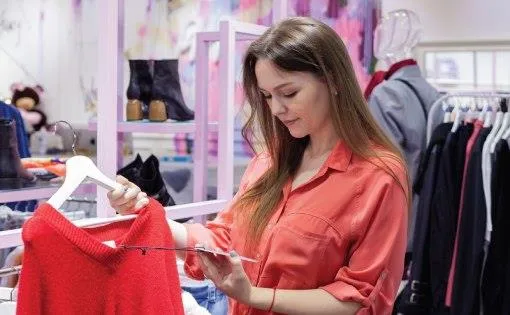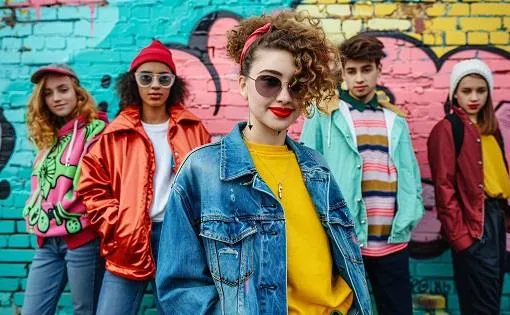Introduction to Greenwashing and Sustainability in Fashion
Picture this: you’re scrolling through your favorite online store, eyeing a cute pair of jeans labeled “eco-friendly.” Your heart skips a beat—finally, a brand that cares about the planet! But then you pause. Is this for real, or just another marketing trick? Welcome to the world of greenwashing versus genuine sustainability, where fashion retailers are locked in a battle for your trust. This article dives deep into how the fashion industry can move beyond empty promises to build authentic, lasting connections with consumers who care about the environment.
What Is Greenwashing?
Greenwashing is when a company slaps a “green” label on its products or practices without backing it up with real environmental action. Think of it like a wolf in sheep’s clothing—brands use vague terms like “sustainable” or “eco-conscious” to seem planet-friendly while hiding harmful practices. It’s a tactic as old as my first pair of skinny jeans, coined back in 1986 by environmentalist Jay Westerveld after he spotted a hotel’s sneaky towel-reuse campaign that was more about saving laundry costs than saving the Earth.
Why Greenwashing Happens in Fashion
The fashion industry is a hotspot for greenwashing because “going green” sells like hotcakes. With Gen Z and millennials prioritizing sustainability—73% of consumers prefer brands with transparent ethical practices—retailers are under pressure to look eco-friendly, even if their supply chains are anything but. Some brands genuinely try but fall short due to poor execution, while others knowingly exaggerate claims to cash in on the green trend.
Characteristics of Greenwashing
Spotting greenwashing is like playing detective in a thrift store. Here are the red flags:
- Vague Claims: Terms like “eco-friendly” or “natural” without specifics.
- Selective Disclosure: Highlighting one green practice (e.g., organic cotton) while ignoring massive water usage.
- Misleading Labels: Self-made certifications with no third-party backing.
- Downcycling: Recycling clothes into lower-quality products that still end up in landfills.
- Flashy Campaigns: Distracting ads that overshadow a brand’s true environmental impact.
What Does Genuine Sustainability Look Like?
Genuine sustainability is the real deal—a commitment to reducing environmental harm across the entire supply chain. It’s not just about using recycled polyester; it’s about transparency, ethical labor, and measurable goals. Brands like Patagonia set the gold standard by offering repair programs and publishing detailed sustainability reports. True sustainability is a marathon, not a sprint, and it shows in actions, not just words.
Key Features of Authentic Sustainability
Authentic brands don’t just talk the talk—they walk it. Here’s what sets them apart:
- Transparency: Clear data on emissions, sourcing, and labor practices.
- Third-Party Certifications: Seals like GOTS or Fair Trade that verify claims.
- Circular Economy: Designing products for reuse, repair, or recycling.
- Science-Based Targets: Measurable goals, like cutting emissions by 20% by 2030.
- Ethical Supply Chains: Fair wages and safe conditions for workers.
The Impact of Greenwashing on Consumer Trust
Greenwashing doesn’t just fool shoppers—it breaks their hearts. When you buy a “sustainable” T-shirt only to learn it was made in a polluting factory, it stings. A 2025 study from IIM Lucknow found that greenwashing erodes brand trust, especially among eco-aware consumers, leading to skepticism about even legitimate claims. H&M’s 10% reduction in Scope 3 emissions in 2023 was met with raised eyebrows because of past greenwashing scandals. This distrust pushes shoppers to competitors who prove their eco-credentials.
How Greenwashing Hurts Brands
Greenwashing is a risky game. Sure, it might boost sales short-term, but getting caught can tank a brand’s reputation. Consumers today are savvy—they’ll call out brands like Zara or H&M on social media for misleading claims, as Earth.Org reported in 2024. Lawsuits, lost loyalty, and tougher regulations are real consequences. Brands that prioritize optics over action risk becoming the fashion equivalent of a one-hit wonder.
Why Consumer Trust Matters
Trust is the currency of modern retail. When consumers trust a brand, they’re more likely to buy, recommend, and stick around. A Nielsen study from 2023 showed that 73% of shoppers prefer brands with transparent ethical practices. For fashion retailers, building trust means proving you’re not just chasing trends but genuinely care about the planet and people. Lose that trust, and you’re left with empty carts and bad reviews.
How Fashion Retailers Can Build Trust Through Sustainability
Building trust is like mending a thrifted sweater—it takes time, care, and skill. Retailers can start by being honest about their environmental impact, even when it’s not perfect. Sharing detailed sustainability reports, partnering with credible certifiers, and investing in eco-innovations like biodegradable fabrics are steps in the right direction. Consumers want brands that admit their flaws and show progress, not perfection.
Steps for Retailers to Embrace Genuine Sustainability
Here’s a roadmap for retailers ready to ditch greenwashing and go all-in on sustainability:
- Publish Transparent Reports: Share data on emissions, water use, and labor conditions.
- Seek Credible Certifications: Work with GOTS, OEKO-TEX, or Fair Trade for verified claims.
- Invest in Innovation: Use sustainable materials like Tencel or recycled nylon.
- Embrace Circular Models: Offer take-back programs that actually recycle, not downcycle.
- Engage Consumers: Educate shoppers about your efforts through storytelling, not jargon.
Comparison: Greenwashing vs. Genuine Sustainability
| Aspect | Greenwashing | Genuine Sustainability |
|---|---|---|
| Claims | Vague, unverified (e.g., “eco-friendly”) | Specific, backed by data or certifications |
| Transparency | Selective or hidden practices | Full disclosure of supply chain impacts |
| Certifications | Self-made or dubious labels | Third-party verified (e.g., GOTS, Fair Trade) |
| Environmental Impact | Minimal or no real change | Measurable reductions in emissions, waste |
| Consumer Trust | Erodes over time due to skepticism | Builds loyalty through authenticity |
This table shows why genuine sustainability wins in the long run—it’s about substance over style.
Pros and Cons of Sustainable Fashion Practices
Pros
- Builds Trust: Transparent practices earn loyal customers.
- Reduces Environmental Harm: Lower emissions and waste benefit the planet.
- Attracts Eco-Conscious Shoppers: Appeals to Gen Z and millennials.
- Future-Proofs Brands: Aligns with stricter regulations and consumer demands.
Cons
- Higher Costs: Sustainable materials and ethical labor can be pricey.
- Complex Implementation: Requires expertise and supply chain overhauls.
- Slower Returns: Investments in sustainability take time to pay off.
- Risk of Scrutiny: Transparency invites closer consumer and regulatory inspection.
Balancing these pros and cons is key for retailers aiming to stay competitive while doing good.
Real-Life Examples of Greenwashing and Genuine Sustainability
Let’s talk stories. I once bought a “sustainable” jacket from a fast-fashion brand, lured by its “green collection” label. Turns out, the jacket’s “eco-friendly” fabric was a tiny fraction of the product, and the brand’s factories were still polluting rivers. That’s greenwashing in action—think H&M or Zara, called out for vague claims despite massive production volumes. On the flip side, Patagonia’s repair program saved my favorite fleece from the landfill, and their transparent supply chain reports made me feel good about supporting them. These examples show the gap between hype and heart.
Brands Leading with Genuine Sustainability
- Patagonia: Uses recycled materials and offers repair services to extend product life.
- Eileen Fisher: Focuses on circular fashion with take-back programs and ethical sourcing.
- Stella McCartney: Commits to cruelty-free, sustainable materials like mushroom leather.
- Everlane: Publishes detailed cost breakdowns and factory conditions for transparency.
These brands prove that sustainability isn’t just a buzzword—it’s a lifestyle.
How Consumers Can Spot the Difference
Consumers aren’t powerless—you’re the Sherlock Holmes of sustainable shopping. Check for certifications like GOTS or Fair Trade, dig into a brand’s website for sustainability reports, and ask questions on social media. If a brand dodges specifics or leans on vague buzzwords, it’s probably greenwashing. Support brands that share hard data, like carbon footprints or recycling rates, and prioritize quality over quantity to reduce waste.
Tools and Resources for Consumers
Here’s where to get the intel you need:
- Good On You: A platform rating brands on sustainability and ethics. Visit goodonyou.eco.
- Fashion Revolution: Offers transparency reports and advocacy resources. Check fashionrevolution.org.
- Sustainable Fashion Brands: Blogs like The Sustainable Brands Journal highlight authentic players.
- Certifications Guide: Look up GOTS, OEKO-TEX, or Fair Trade standards online.
These tools empower you to shop smarter and support brands that align with your values.
People Also Ask (PAA) Section
What is greenwashing in fashion?
Greenwashing in fashion is when brands falsely claim their products or practices are eco-friendly to attract consumers, often using vague terms or misleading labels without real environmental action.
How can I tell if a brand is truly sustainable?
Look for third-party certifications, transparent supply chain reports, and measurable goals like emission reductions. Authentic brands like Patagonia share detailed data and prioritize ethical practices.
Why is greenwashing bad for consumers?
Greenwashing erodes trust, misleads eco-conscious shoppers, and diverts support from genuinely sustainable brands, making it harder to make informed choices.
Which fashion brands are genuinely sustainable?
Brands like Patagonia, Eileen Fisher, and Stella McCartney lead with transparent, ethical practices and verified sustainability efforts. Check their websites for proof.
FAQ Section
1. What are some signs of greenwashing in fashion retail?
Signs include vague claims like “eco-friendly,” lack of third-party certifications, and focusing on one green aspect while ignoring broader impacts. Always check for data or credible labels.
2. How can fashion brands avoid greenwashing?
Brands should publish transparent reports, seek verified certifications, and integrate sustainability across their supply chain. Honesty about progress builds trust.
3. What are the best tools to verify sustainable fashion brands?
Apps like Good On You and websites like Fashion Revolution provide ratings and transparency reports. Certifications like GOTS or Fair Trade are also reliable indicators.
4. Why do consumers care about sustainability in fashion?
Consumers, especially Gen Z, value sustainability due to climate change concerns. They want brands that align with their ethics, with 73% preferring transparent practices.
5. Can small fashion brands be sustainable?
Yes, small brands often excel at sustainability through made-to-order models or local sourcing, like many highlighted by The Sustainable Brands Journal.
Conclusion: The Path to a Trustworthy Fashion Industry
The fashion world is at a crossroads—greenwashing might score quick wins, but genuine sustainability builds lasting trust. Retailers must embrace transparency, invest in ethical practices, and tell authentic stories to win over eco-conscious shoppers. As consumers, we hold the power to demand better by supporting brands that prove their commitment. Let’s ditch the green fluff and stitch together a future where fashion doesn’t cost the Earth. Ready to shop smarter? Start with brands like Patagonia or check out Good On You for your next eco-friendly find.






